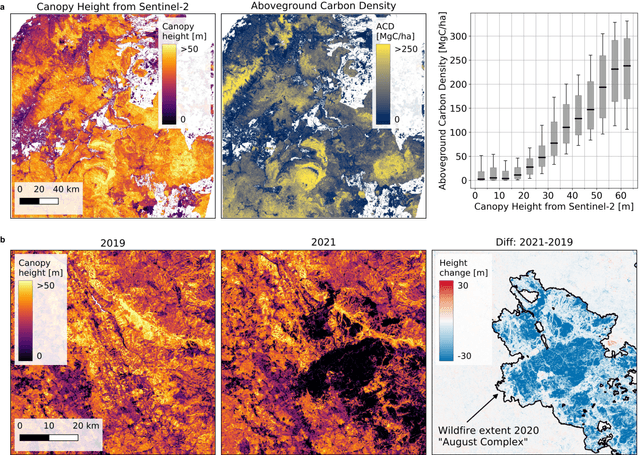A high-resolution canopy height model of the Earth
Paper and Code
Apr 13, 2022



The worldwide variation in vegetation height is fundamental to the global carbon cycle and central to the functioning of ecosystems and their biodiversity. Geospatially explicit and, ideally, highly resolved information is required to manage terrestrial ecosystems, mitigate climate change, and prevent biodiversity loss. Here, we present the first global, wall-to-wall canopy height map at 10 m ground sampling distance for the year 2020. No single data source meets these requirements: dedicated space missions like GEDI deliver sparse height data, with unprecedented coverage, whereas optical satellite images like Sentinel-2 offer dense observations globally, but cannot directly measure vertical structures. By fusing GEDI with Sentinel-2, we have developed a probabilistic deep learning model to retrieve canopy height from Sentinel-2 images anywhere on Earth, and to quantify the uncertainty in these estimates. The presented approach reduces the saturation effect commonly encountered when estimating canopy height from satellite images, allowing to resolve tall canopies with likely high carbon stocks. According to our map, only 5% of the global landmass is covered by trees taller than 30 m. Such data play an important role for conservation, e.g., we find that only 34% of these tall canopies are located within protected areas. Our model enables consistent, uncertainty-informed worldwide mapping and supports an ongoing monitoring to detect change and inform decision making. The approach can serve ongoing efforts in forest conservation, and has the potential to foster advances in climate, carbon, and biodiversity modelling.
 Add to Chrome
Add to Chrome Add to Firefox
Add to Firefox Add to Edge
Add to Edge